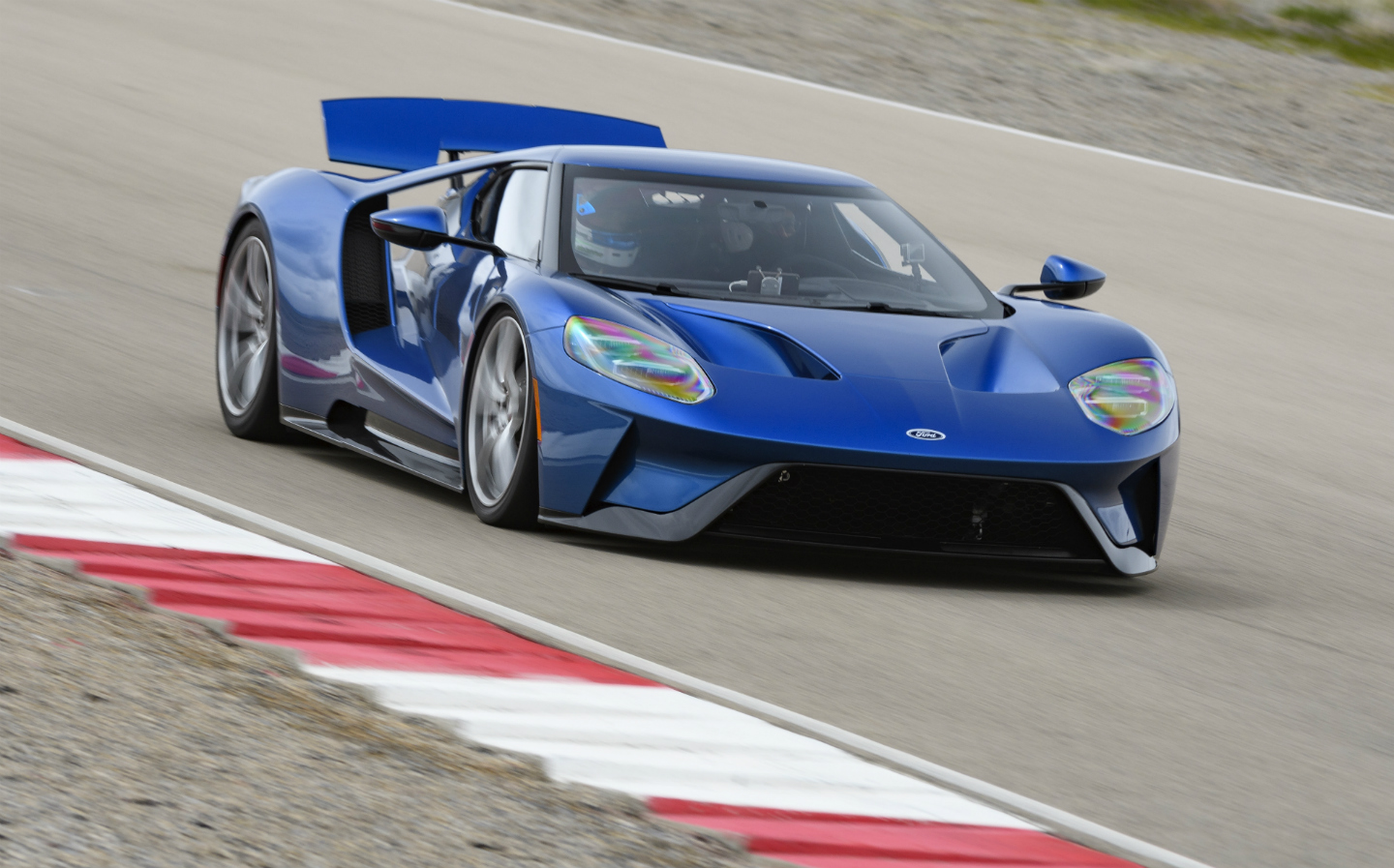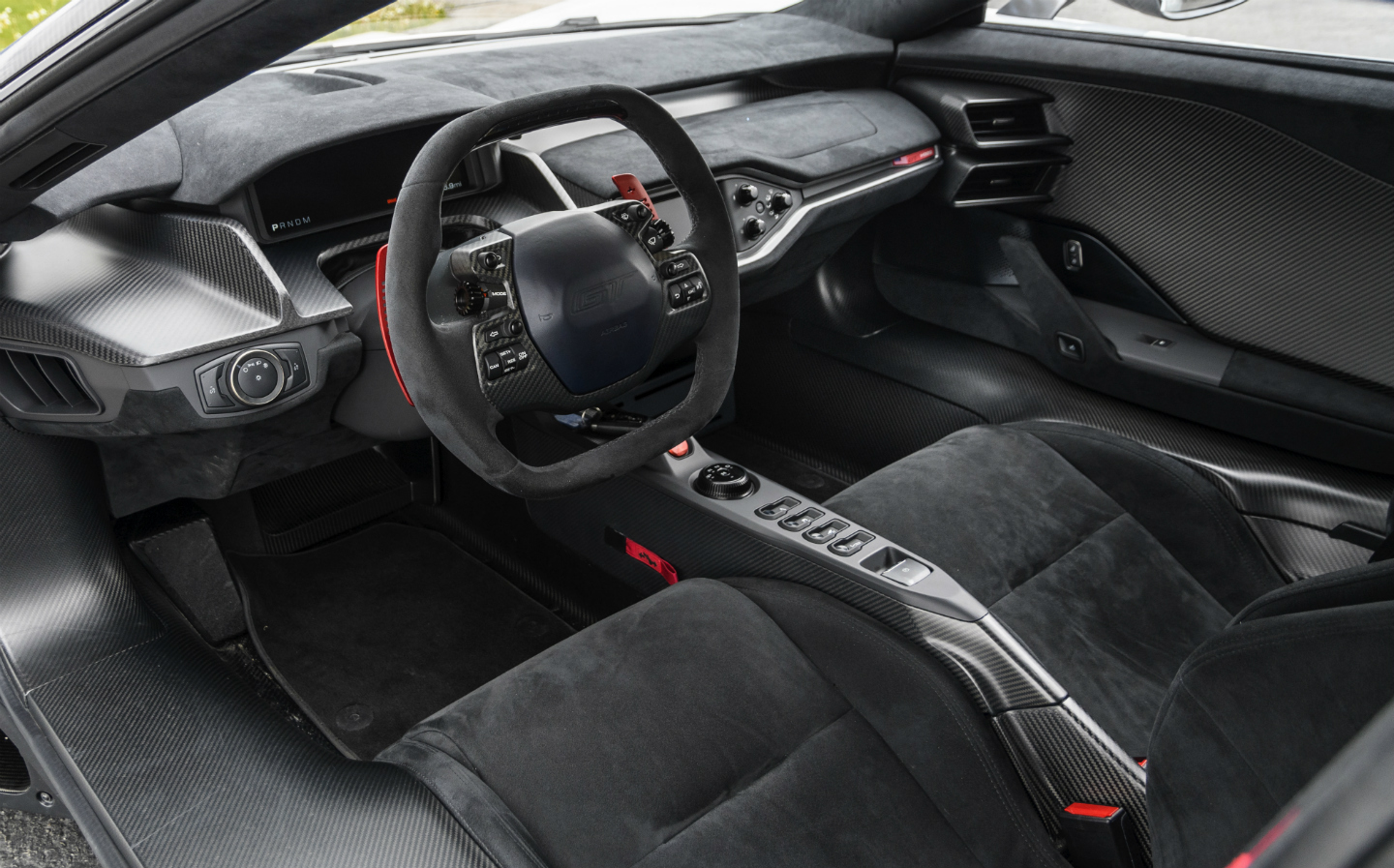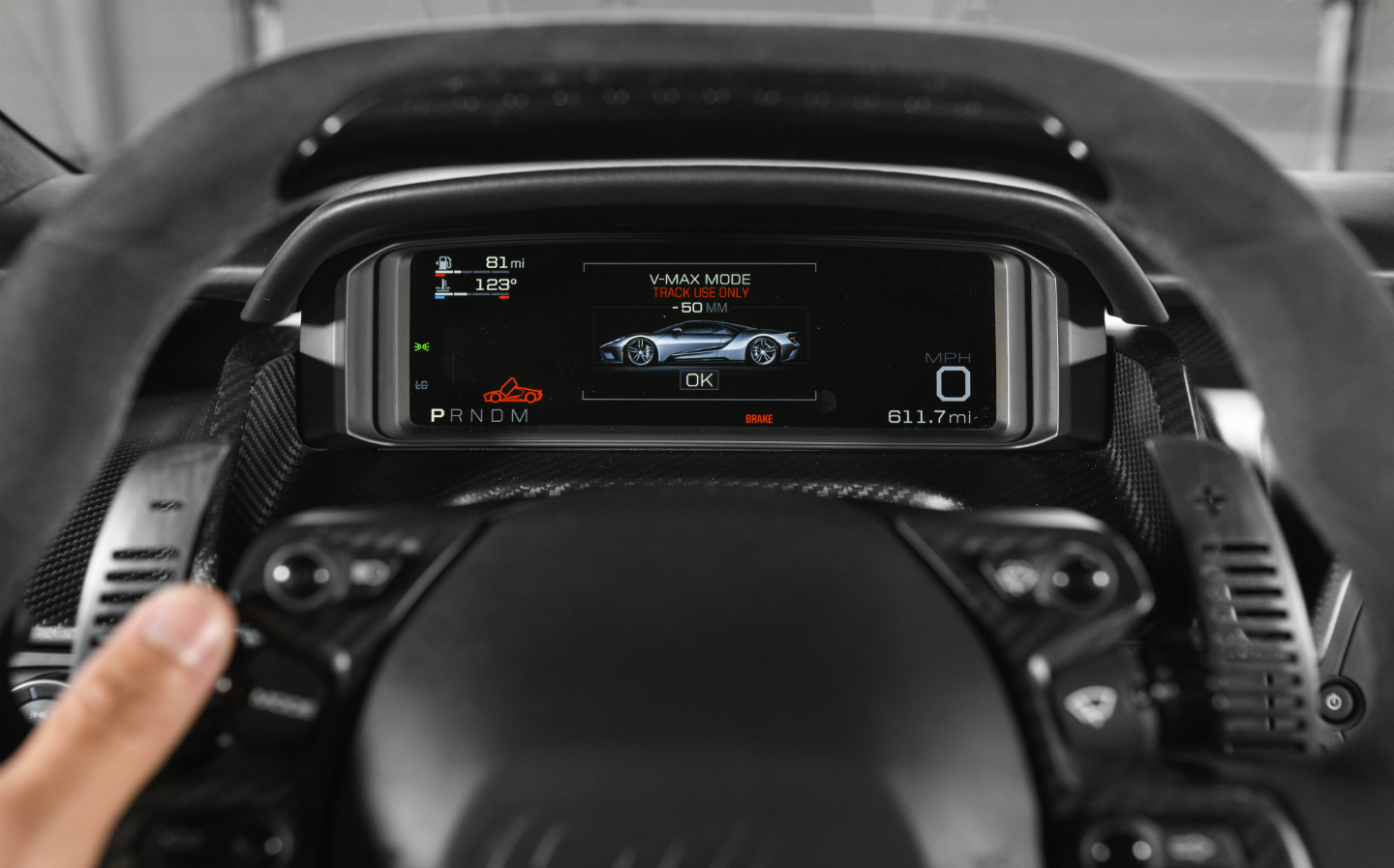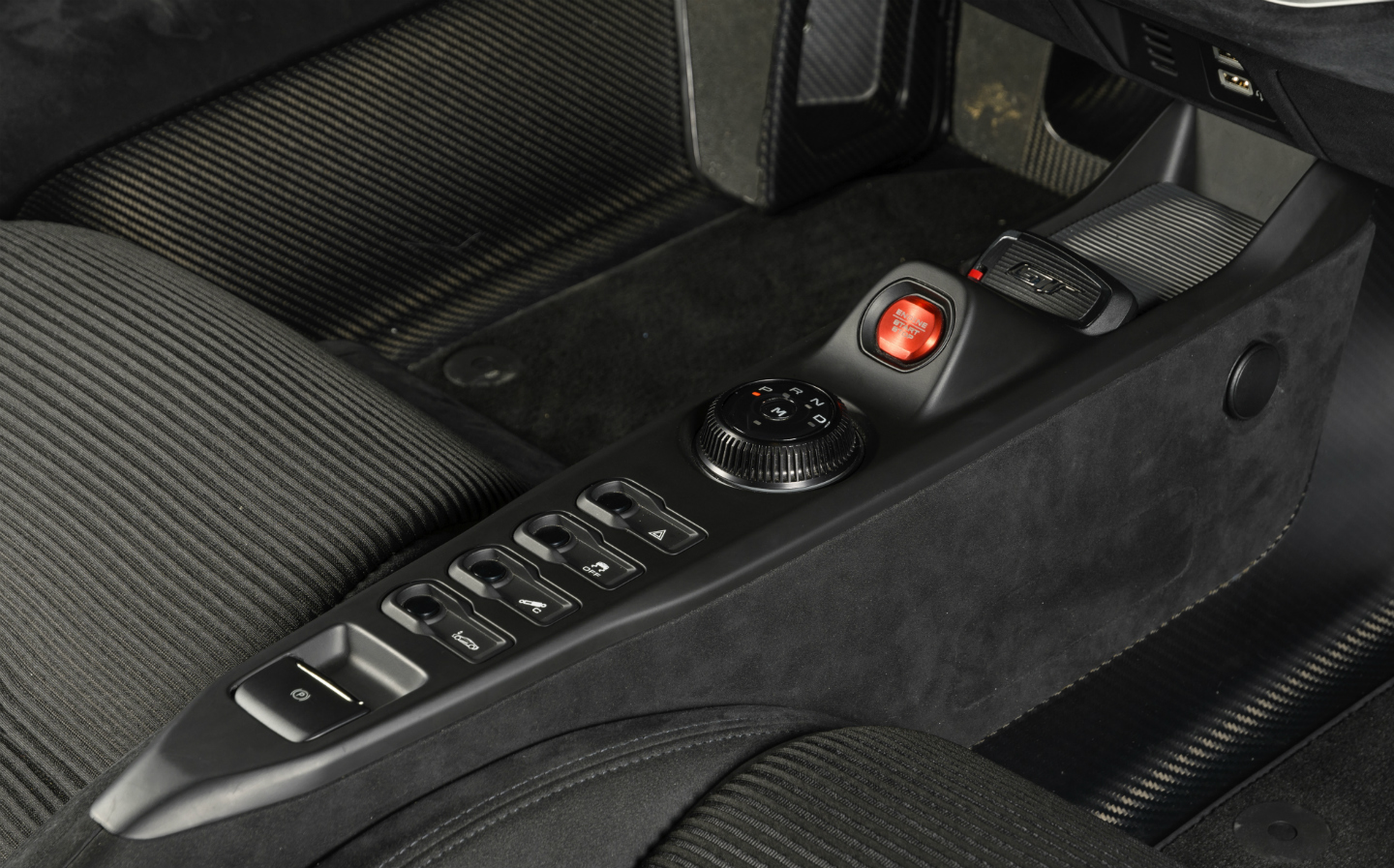The Guy Martin review: 2017 Ford GT
I'd rather have a Transit van
THE NEW Ford GT isn’t a supercar pretending to be a racing car — it is a racing car. It sounds vicious: you can’t escape the noise of the wastegates as you change gear and the cracking and banging of the exhaust on the overrun.
Ford built this car to win the Le Mans 24 Hours in 2016 and has now released a road-going version off the back of it. The company did the same thing in the 1960s when it made the GT40, and the new car was created to win Le Mans on the 50th anniversary of the original Ford supercar beating Ferrari — and everyone else — at the endurance race in 1966.
You know the story: Ford was set to buy Ferrari, but the Italians pulled out at the eleventh hour; the American firm got the hump and thought it would teach Ferrari a lesson by beating it in the biggest sports car race in the world. And that’s what it did.
But don’t call this one a GT40, as I accidentally kept doing, because it’s just the GT. Amazingly for a company the size of Ford, it lost the right to use the name GT40 in 1999, when the trademark was bought by a company in Ohio that sells spares for the original cars.
Just opening the “butterfly” doors on the GT is something out of the ordinary and had me champing at the bit to get in it. Start the car and the dash reminds you — as if you needed it — of the machine’s racing roots, as it tells you much more than most road cars: oil pressure and temperature, gearbox temperature and gear position.
The GT had come from a track test at Silverstone and I noticed it was brimming with super-unleaded, but the dash said the distance to empty was 87 miles. That’s thirsty. It has a 57½-litre tank, and Ford’s own spec sheet reckons it should do 200 miles on a complete fill-up in normal driving conditions, which is about 16mpg. On the track it’s doing closer to 7mpg.
You can tell this car has a racing pedigree because of the aerodynamics — they’re really something else. There’s a rear spoiler that raises and lowers and tilts at different speeds. Then, when you slam on the massive carbon-ceramic brakes, it flips to act as an air brake. Another hangover from racing is the seats. They are bolted in position so they don’t compromise the strength of the chassis. You adjust the steering wheel and pedal box instead.
Ford launched a previous GT in 2004, and built just 4,000 [Jeremy Clarkson famously rejected his GT after just a month of ownership — read his review here]. This 2017 version doesn’t have much in common with that car, except the name. You could argue it’s got more similarities with another 50-odd-year-old Ford icon: the Transit van. The GT has a 3.5-litre twin-turbo V6 EcoBoost engine. The American-spec Transit has the same basic unit, but it doesn’t make 647bhp, as this GT does.
In fact, not even the track version of the GT that won its class last year at Le Mans produced that much power. Because of the world endurance championship’s handicap system, the Ford team had to lower the power to less than 500bhp to level the playing field. So, strangely, the road-going GT is much more powerful than its race-winning sister car. My GT also had the American-spec Transit’s headlight switch. I liked that about it.
The Ford delivery driver said it was my decision, but he’d prefer it if the GT didn’t go out in the wet, perhaps because of that 647bhp rear-wheel-only drivetrain.
All that power and acceleration, but it’s left-hand drive, so you can’t see to overtake
Ford also said this test car was a prototype, so while we waited for the rain to stop, the delivery driver showed me how the car switches to Track mode at the press of a button. The whole vehicle drops 2in on its suspension, to just 2¾in. It isn’t subtle when it does it — anyone standing by the car might want to watch their toes — and you’d struggle to drive it on most normal roads when it’s that low. Ford even sent out a note in capital letters saying it must not be driven on the road on the lower height setting. There are two modes where the car drops: Track and V-Max. The difference between the two is the spoiler stays hidden in the body in the latter setting because it would affect the top speed. Ford reckons the GT will do 216mph.
When finally the rain stopped and I did get the car going, the rear spoiler was moving about that much, I thought I’d left the boot open. I could hardly keep my eyes off it in the rear-view mirror. Another thing is, the Ford is made as left-hand-drive only, so for all that power and potential acceleration you’ve got under your right foot, you can’t push it on real roads because you can’t see to overtake anything.
That means as a road-going supercar in Britain it’s pointless. In a machine this quick there would never be a time when you weren’t about to overtake something. Another thing is that the GT is wide, quite a bit wider than the Honda NSX I tested last week. I felt as if I had to drive with two wheels in the gutter so the other side of the car wasn’t creeping over the white line.
In the end I didn’t do more than 100 miles in the GT in the time Ford let me have it, but that was enough to get the measure of it and to learn that, while it’s impressive, it isn’t for me. I’d be just as happy to drive the Transit that the Suffolk-based customiser Krazy Horse and Radical Sportscars of Peterborough built for me to race in the Silver State Classic Challenge road race in Nevada last year.
It had the same engine as the GT, but the one in my Trannie was even more powerful, producing 700bhp. Because of the difference in aerodynamics, the van would only do 155mph flat-out, which is good for a Transit. It didn’t take itself as seriously as the GT. Come to think of it, given a choice, I’d be happiest in the special edition Transit I’ve designed myself.
Ford is going to build 1,000 GTs, so it’s not enough to have the £450,000 asking price to buy one. A friend of mine has the previous GT and he was on the waiting list for one of these but wasn’t allocated one in the first round of sales. He asked if I could help him get one, as he doesn’t do any of that social media stuff and part of the application process is how many Twitter followers you’ve got.
Since when has it mattered how many followers you’ve got on Twitter, or even if you’re on it, when it comes to whether you’re the right person to buy a car? That puts me off it even more.
Head to head: Ford GT vs Krazy Horse Ford Transit
| Ford GT | Krazy Horse Ford Transit | |
| Engine | 3,497cc, V6, twin turbo | 3,497cc, V6, twin turbo |
| Power | 647bhp | 700bhp |
| Torque | 550Ib ft | 530Ib ft |
| Top speed | 216mph | 155mph |
Ford’s “application window” to buy the GT will reopen in spring 2018. The Guy Martin Proper Edition Transit is available now from guymartinproper.com
Second opinion on the new Ford GT:














